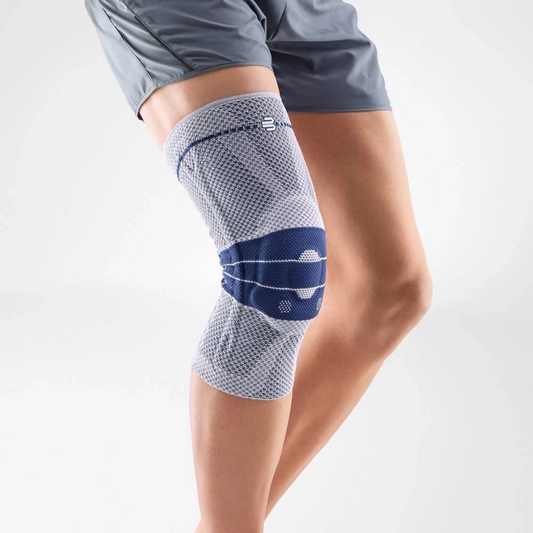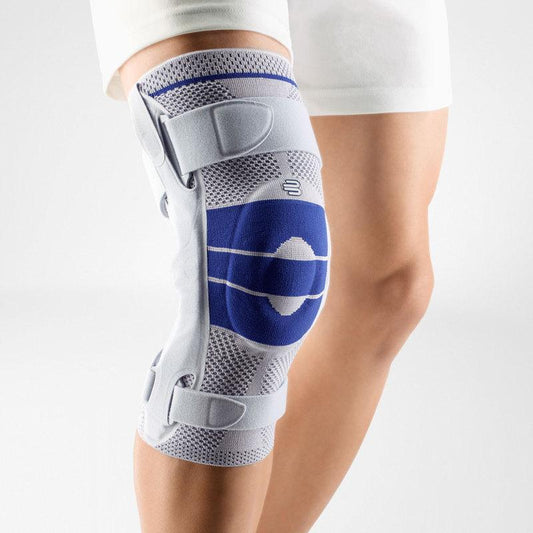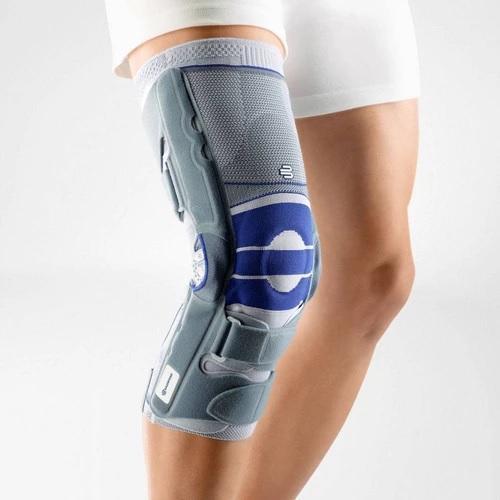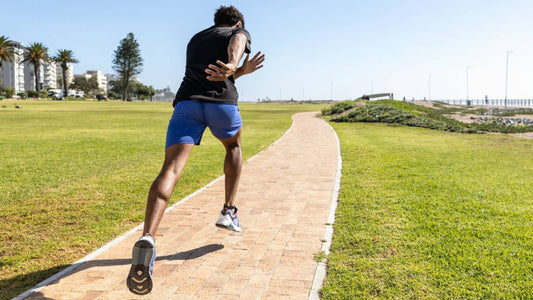Osteoarthritis prevalence and the importance of intervention
Osteoarthritis (OA) is a progressive, inflammatory, and degenerative condition of the joint characterised by cartilage destruction, synovitis, and subchondral sclerosis.The gradual structural changes to the joint in OA are accompanied by distortions to its physiological and neuromuscular capabilities, yielding negative consequences on joint mobility and function. As one of the most widespread musculoskeletal conditions, OA has evolved into a prominent area of discussion in orthopaedics, informed by the ever-increasing burden that OA is imposing on modern societies.
- According to Arthritis Australia, OA affects around 22% of Australians over the age of 45. In 2022, 2.1 million Australians were living with OA.
- With an aging population affecting many developed countries, particularly Australia, the incidence of primary OA will continue to increase. In 2023, osteoarthritis accounted for 2.5% of the total disease burden in Australia and 20% of the burden of musculoskeletal conditions.
The prevalence of OA amongst the Australian population is incontrovertible and equally apparent and correlative is the economic and healthcare burden posed by the high incidences of OA across diverse age groups and demographics. Between 2021-2022, there were 242,000 hospitalisations with a principal diagnosis of osteoarthritis, representing 2.1% of all hospitalisations. During the same period, 53,500 knee replacements and 35,500 hip replacements were performed to treat osteoarthritis. With a total associated healthcare expenditure of $4.3 billion across treatment and management, holistic and multidisciplinary therapeutic approaches have been brought into focus due to the necessity to diversify treatment options for impacted individuals, reduce healthcare burden, and improve medical outcomes. This is particularly crucial, as 70-80% of all OA cases could benefit from a conservative holistic management approach.
Current arthritis management techniques like bracing, physical exercise, lifestyle modifications, and dietary changes aim to slow the progression of the condition and work to improve the patient’s quality of life. Such methods may also serve to delay or bypass the need for surgery. Emerging research into regenerative therapies is also promising and may be used in conjunction with conservative methods for the best possible results.
Why it’s crucial to maintain movement as part of OA management
Immbolisition promotes cartilage degeneration. Movement, meanwhile, is widely recognised as an effective way to manage OA, with many studies reporting benefits. It maintains muscle mass and bone density, supplies nutrients to the cartilage, helps restore motor patterns, and reduces the muscle stiffness commonly associated with the condition. Through the release of endorphins, it can also reduce the perception of pain.
However, a key challenge is how to keep patients active when their condition (and subsequently their pain levels) are moderate to severe and are accompanied by impairments to joint mobility and movement patterns.
Current recommendations include combining low-impact flexibility, cardio, and strength training. Patients may opt to lift weights or move against resistance bands, take yoga classes, and go on brisk walks or bike rides. Clinicians also often advise against high-impact activities like jogging and competitive sports. Although such activities do improve strength and cardiovascular fitness, they also put significant strain on the joints, which can lead to worsening pain.
Some studies into conservative management recommend combining exercise with other management steps - namely, bracing - to support movement, improve proprioception, improve joint mechanics, and offload pressure.
The significance and impact of bracing on OA management
OA supports and braces have long since been a cornerstone of OA management and post-op recovery.
Compression supports like the GenuTrain and GenuTrain A3 work to stimulate proprioception and activate neuromuscular responses to counteract the impairments in joint physiology that are observed in early-stage OA. An independent study found that the GenuTrain, in particular, reduced knee abduction in OA patients by 9% and pressure on the hindfoot by 25%.




Another study published by Reer R et al. in Orthopadie Technik found the GenuTrain A3 Knee Brace significantly increased walking distance without pain by a factor of 2.4. Additionally, after 6 months of wearing the brace, patients reported lower values for pain and higher values for stability.

Semi-rigid braces like the GenuTrain OA - better suited for moderate cases of the condition - combine the pain-relieving padding and proprioception-improving compression of the GenuTrain and A3 with a 3-point offloading mechanism. The straps and stays in this mechanism can be adjusted with millimetre precision to take the pressure off one side of the knee.
A study in the Journal of Clinical Medicine found that among their 24 participants with moderate unilateral medial knee osteoarthritis, the GenuTrain OA:
- Reduced pain by up to 48.1%
- Increased physical activity by 50.6%
- Increased mobility by 5.0%
- Improved quality of life by 13.4%
The brace also has high wearing comfort, with patients able to lower the tension in the BOA system when at rest and tighten it again when up and active.



Rigid, hinged supports like SecuTec OA, meanwhile, are best suited for more severe presentations of the condition, where varus/valgus misalignments are characteristics of the disease phenotype. The brace provides significant external support to the knee while also incorporating an offloading system that mechanically corrects valgus/varus distortions to stabilise the knee axis and reinstate mobility.
Learn more in our collected studies.
Regenerative medicine in combination with bracing to enhance mobility in individuals with OA
Regenerative medicine is the practice of using the body’s own strength to treat a condition long-term. This can involve taking healthy tissues from other parts of the body and using them to repair damaged ones or stimulating a healing response in the body through therapies like Low-Level Laser, platelet-rich plasma, and Prolotherapy.
- Dextrose prolotherapy has shown promising results in OA treatment, improving pain levels and function.
- Injecting platelet-rich plasma into an arthritis joint is also promising, with one study finding it can provide significant chrondoprotection and alleviate symptoms.
- An LLT study found that the therapy significantly reduced disability at the end of the treatment process and at 1-12 week follow-ups.
Researchers at Duke University have also reportedly moved to human trials testing hydrogels that could replace damaged cartilage and that, when crystalised into PVP, are up to 4x more resistant to wear than healthy cartilage tissue.
However, as with surgical procedures, regenerative therapies may work best when part of a holistic approach, including exercise and bracing. Even if damaged cartilage can one day be regenerated or replaced, other damaged knee tissues like the synovial lining and the loss of mobility, muscle mass, and proprioception still need to be worked on.
For instance, the offloading support offered by the GenuTrain OA and SecuTec OA can help keep the knee properly aligned during the regenerative process and reduce pressure on damaged cartilage, allowing patients to stay active without pain or risk of further damage.
The corrective patella cap of the A3 can facilitate proper knee-cap position, and its compression knit fabric will help patients maintain and regain stability and confidence during movement.
The role of dietary and lifestyle modifications
Diet can play a role in reducing osteoarthritis symptoms. According to a review in Oxford Academic:
- Vitamin K is involved in bone and cartilage mineralisation.
- Vitamin D deficiency is common in patients with OA, so supplementation or increases in vitamin D-rich foods such as salmon, mushrooms (for vitamin D3) and fortified dairy products may be beneficial
- Studies conducted on vitamin C (which plays a significant role in collagen production) and vitamin E (an antioxidant) have shown good results in pain reduction.
However, while some results are promising, the research is still quite mixed. As diet and vitamin levels can vary significantly from patient to patient, it’s essential to work with them - and potentially a GP or Dietician - to pinpoint the best supplements and meal plans for them.
Patients are often advised to undertake certain lifestyle modifications, like losing weight if overweight or obese, avoiding inflammatory foods like processed sugars and salt, and not engaging in contact or high-impact sports. While there is research backing the suggestions, as with braces, the best fit will depend on the patient and their specific condition.
The importance of physiotherapy and holistic management
Each of the above methods - from diet to regenerative therapies - can be effective in reducing pain, improving mobility, and overall improving a patient’s quality of life. However, a holistic approach incorporating most (if not all) of these methods may yield the best results.
Physiotherapists play a key role in adapting these modalities to the patient’s specific case, from creating a custom rehabilitative exercise plan to recommending activity modifications and supports. As there is currently no cure for the condition, it’s essential to use current effective methods to slow its progression.













